Haomei Aluminum Alloys
With 20 years'development, Haomei has grown into a top aluminium alloy manufacturers and suppliers. We have comprehensive kinds of aluminium sheets, aluminum coil, aluminum strip, aluminum foil, aluminum discs, aluminum tread plate, color coated aluminum and CTP plates, covering series-1, series-3,series-5, series-6 and series-8. You can realize one-stop purchase in Haomei.
How Is FSW Aluminium for Shipbuilding Produced #aluminum #shipbuilding
1060 1070 Aluminum Foil Strip Coil
As representatives of 1-series pure aluminum strips, 1060 and 1070 aluminum strips share the core characteristics of pure aluminum:
Similar properties: Both have essentially equal tensile and yield strengths (tensile strength ≥ 75 MPa, yield strength ≥ 35 MPa), and neither can be strengthened by heat treatment; strength can only be increased through cold working.
Similar processing characteristics: Both possess excellent plasticity and formability, meeting the needs of conventional processing such as stamping and stretching, and have good weldability, suitable for processes such as electric welding and gas cutting.
Basic application overlap: It can be used in scenarios where there are no special performance requirements, such as gasket manufacturing, capacitor housing, and simple decorative parts, making it a common choice for low-cost pure aluminum solutions.
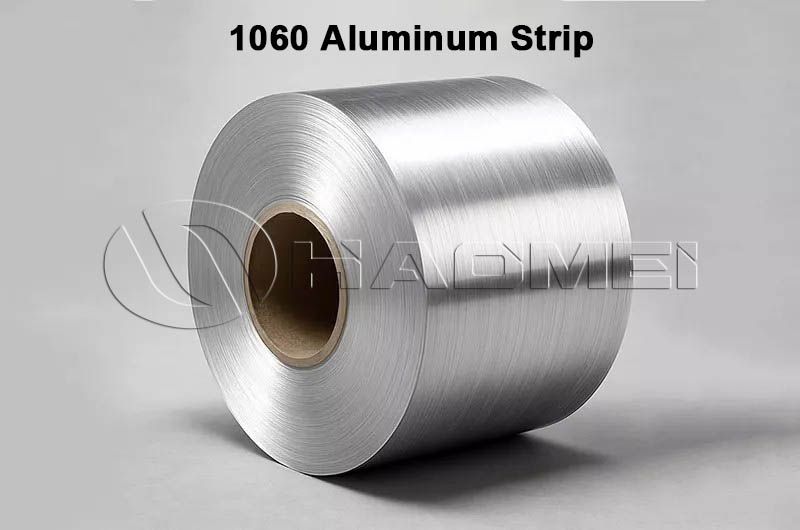
Key Differences Analysis
The core difference between the two stems from a 1% difference in aluminum content, yet it triggers a chain reaction in performance and cost:
Items | 1070 aluminum strip | |
Composition purity | Aluminum content 99.6%, slightly higher iron and silicon impurities (iron ≤0.35%, silicon ≤0.25%) | Aluminum content 99.6%, slightly higher iron and silicon impurities (iron ≤0.35%, silicon ≤0.25%) |
Core performance | Medium conductivity and corrosion resistance | Conductivity improved by approximately 3%, with superior corrosion resistance, especially suitable for humid environments. |
Mechanical details | Elongation 1.1%-30%, shear strength 42-75MPa | Elongation 4.5%-39%, shear strength 48-79MPa, with enhanced plasticity. |
Aluminum strip price | The production process is simple, and the price is 5%-10% lower than 1070. | It has higher purity and a slightly higher price, but is still economical. |
Application Areas
1. Cross-application scenarios
Both types of aluminum have a high degree of overlap in basic industrial fields, making them particularly suitable for scenarios where purity requirements are not extremely stringent:
Basic electronic components: Used for capacitor housings and simple electronic wire cores, relying on good conductivity to meet basic circuit requirements.
General hardware accessories: Stamped parts such as aluminum gaskets and small protective shells, utilizing their ease of processing to reduce production costs.
Decorative structural components: Building exterior wall decorative strips, ventilation system covers, etc., relying on the weather resistance and aesthetic plasticity of pure aluminum.
2. Differentiated application areas
1060 aluminum strip: It focuses on "cost-effectiveness first" scenarios, such as transformer aluminum strip (core raw material), power battery flexible connections, and aluminum-plastic composite panel substrates. These fields are less sensitive to purity and prioritize cost control.
1070 aluminum foil strip: It focuses on "high-purity essential" scenarios, including medical busbars, electrical distribution cabinet conductors, high-precision heat exchangers, and aviation ventilation system components, relying on its excellent conductivity and corrosion resistance.
Overseas markets
Feedback from overseas markets such as Europe, the US, Japan, and South Korea shows that 1070 aluminum strip enjoys significantly higher acceptance than 1060, primarily due to three reasons:
High acceptability of performance premium: Overseas manufacturers prioritize long-term operating costs, and 1070's high corrosion resistance reduces maintenance costs, especially in humid Nordic regions and coastal areas with high salt spray.
Driven by demand from high-end manufacturing: Europe and the United States have highly developed high-end industries such as aerospace and medical equipment, which have stringent requirements for conductivity stability and material purity. 1070 meets their standards, while 1060 is mostly used in low-end OEM manufacturing.
Strong standard system adaptability: Overseas industrial standards have stricter restrictions on impurity content, and the low impurity characteristics of 1070 (residues≤0.03%) make it easier to pass EU CE and US ASTM certifications.
Original source: https://www.aluminumstrip24.com/news/1060-1070-aluminum-foil-strip-coil.html
7075 Aerospace Aluminum Plate
In the aviation manufacturing industry, material performance is directly related to aircraft safety, weight reduction, and operational efficiency. As a commonly used high-strength aluminum alloy, 7075 aircraft grade aluminum, with its excellent properties, has become a key choice for the manufacture of numerous aviation components.
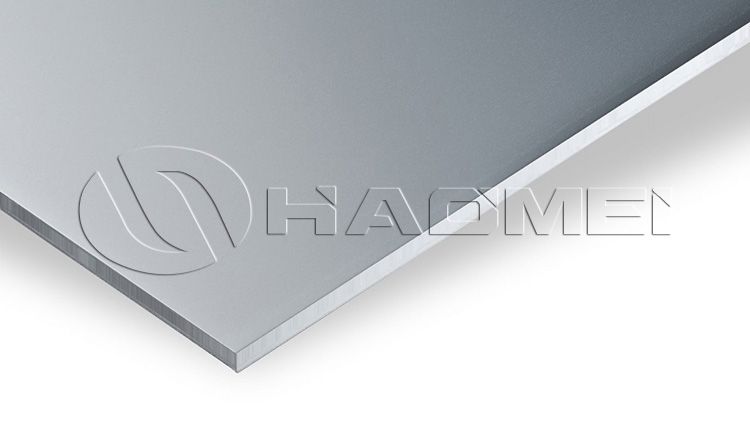
I. Core Performance Advantages of 7075 Aviation Aluminum Sheet
7075 aviation aluminum sheet belongs to the Al-Zn-Mg-Cu family of ultra-hard aluminum alloys. Its performance advantages are primarily reflected in the following aspects. First, it offers high strength. After proper heat treatment (such as T6 or T73 tempers), its tensile strength can reach over 500 MPa and its yield strength exceeds 430 MPa, both of which are relatively high among aluminum alloys and can withstand the complex stresses generated during aircraft flight.
Secondly, it possesses excellent fatigue strength, a crucial characteristic for aircraft. During long-term takeoffs and landings, aircraft components are subjected to repeated loads. Good fatigue strength reduces the risk of failures caused by fatigue damage. Furthermore, the density of 7075 aviation aluminum sheet is approximately 2.81g/cm³, significantly lower than that of steel (approximately 7.85g/cm³). While maintaining structural strength, it can effectively reduce the overall weight of an aircraft, thereby reducing fuel consumption and improving flight performance.
II. Typical Application Scenarios in the Aviation Industry
Due to these performance advantages, 7075 aviation aluminum sheet has extensive and critical applications in aviation manufacturing. In aircraft fuselage structures, it is often used to manufacture core load-bearing components such as fuselage frames and wing spars. These components must meet the requirements of both high strength and lightweight, and the properties of 7075 aviation aluminum sheet perfectly meet these requirements.
In wing systems, this material is also commonly used in movable components such as flaps and ailerons. Its excellent strength and fatigue resistance ensure that these components operate stably under frequent operation and complex airflow environments. Furthermore, in aircraft landing gear structures, some load-bearing components are also made of 7075 aviation aluminum sheet to withstand the significant impact and loads endured during takeoff and landing.
III. Precautions During Processing and Use
Although 7075 aviation aluminum sheet offers excellent performance, certain key points require attention during processing and use. During machining, due to its high hardness, rapid tool wear is common during cutting. Therefore, it is important to select appropriate tool materials (such as carbide tools) and properly control cutting parameters (such as cutting speed and feed rate). Cooling lubricants can also be used to reduce friction and heat during machining, thereby improving precision and efficiency. Regarding heat treatment, different heat treatment conditions directly affect material properties. Strictly adhere to heat treatment process specifications based on specific application requirements to ensure the material achieves the expected strength, hardness, and other performance indicators.
During use, it is important to pay attention to the material's corrosion resistance in specific environments. While inherently corrosion-resistant, corrosion may occur in marine climates, humid environments, or when exposed to corrosive media. Therefore, necessary anti-corrosion measures, such as surface coatings and regular maintenance and inspections, are necessary to extend the material's service life and ensure the safety of aviation components.
IV. Market Status and Development Trends
Currently, with the continuous development of the global aviation industry, especially the growing demand for high-performance materials in commercial, general, and military aviation, market demand for 7075 aerospace aluminum plate remains steadily rising. Numerous aluminum alloy manufacturers, both domestic and international, are prioritizing its R&D and production, while continuously optimizing production processes to enhance product quality and performance stability to meet the aviation industry's requirements for higher precision and reliability.
Looking at development trends, future research on 7075 aviation aluminum sheet will focus on further improving its overall performance. For example, by fine-tuning alloy composition and developing novel heat treatment processes, these efforts will enhance its corrosion resistance and low-temperature performance while maintaining its high strength and lightweight advantages. Furthermore, as aviation manufacturing technology evolves towards integration and intelligentization, higher requirements will be placed on the processing of 7075 aviation aluminum sheet, driving continuous innovation in related processing technologies to better adapt to the complex designs and efficient manufacturing requirements of aviation components.
Original source: https://www.aircraft-aluminium-sheet.com/a/7075-aerospace-aluminum-plate.html
Car Aluminum: 6016 VS 6014
With the trend toward lightweight in automobiles, aluminum alloys have become a core choice for body materials due to their low density and high cost-effectiveness. 6000-series aluminum alloys, due to their excellent formability and corrosion resistance, are widely used in body panels and structural parts. 6016 and 6014 aluminum alloy, successor alloys in this series, are often used in key components such as doors and hoods.
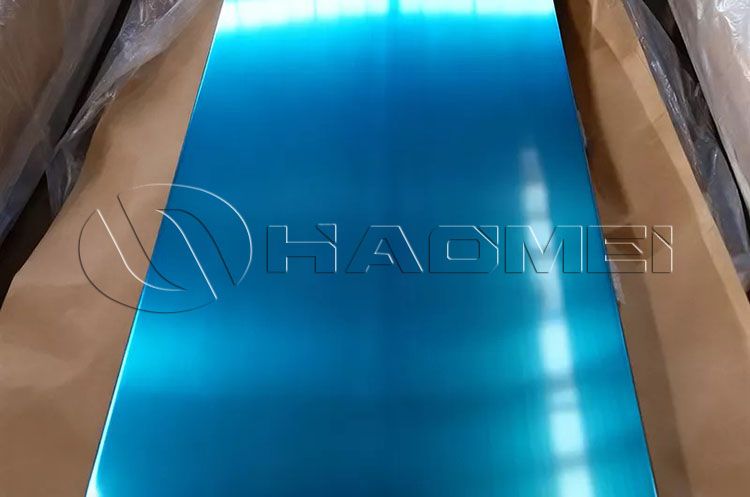
Basic Properties
6016 and 6014 aluminum sheets are both 6000-series aluminum alloys (primarily magnesium and silicon), but subtle differences in their compositional proportions lead to distinct performance characteristics:
6016 aluminum alloy: Magnesium content is approximately 0.8%-1.2%, silicon content is approximately 0.9%-1.3%, and a small amount of copper (0.15%-0.4%) is added. The addition of copper enhances its strength after heat treatment while retaining good ductility.
6014 aluminum alloy: It has a slightly lower magnesium content (0.4%-0.8%), a silicon content similar to 6016 (0.8%-1.2%), and contains no copper. The lower magnesium content makes it easier to form, but its strength is slightly lower than 6016.
Key Performance Comparison
For automotive aluminum, formability, strength, and corrosion resistance are three key performance indicators. 6016 and 6014 exhibit distinct differences in these three areas:
1. Formability
Automotive panels (such as doors and fenders) often require complex stamping processes, and formability directly determines the part's yield rate.
6014 aluminum: Due to its lower magnesium content, the material exhibits better plasticity and is less prone to cracking during complex processes such as deep drawing and bending. It is particularly suitable for parts with complex shapes that require multiple stamping cycles.
6016 alloy : While its formability can meet general requirements, it's slightly inferior to 6014. It's more suitable for applications requiring simpler stamping processes but requiring higher strength.
2. Strength
Body components require sufficient strength to ensure driving safety, especially those that must withstand certain external forces, such as the hood and roof.
6016 aluminum plate: Thanks to the addition of copper and a higher magnesium content, after T4 (solution treatment followed by natural aging) or T6 (solution treatment followed by artificial aging) heat treatment, it achieves a tensile strength of 260-300 MPa and a yield strength of approximately 200-240 MPa, providing improved resistance to impact and loads.
6014 aluminum sheet: With a tensile strength of approximately 220-260 MPa and a yield strength of approximately 160-200 MPa, while its strength is lower than 6016, it can meet the requirements of non-core load-bearing components such as doors and trunk lids.
3. Corrosion Resistance
Cars are exposed to corrosive environments such as rain and salt for extended periods of time, and corrosion resistance is the bottom line for a material's durability.
Both 6016 and 6014 alloys are heat-treatable aluminum alloys. After anodizing or electrophoretic coating, they form a dense protective layer with salt spray resistance exceeding 500 hours (the industry standard requires ≥300 hours), ensuring a vehicle's service life of more than 10 years. In its uncoated state, 6014 exhibits slightly better corrosion resistance than 6016 due to its copper-free state. However, in practice, the coating process can compensate for this subtle difference.
Application Scenarios
Due to its higher strength, 6016 alumium sheet for sale is primarily used for panels requiring high strength and safety. For example:
Hoods: These must withstand stone impacts and minor collisions while maintaining structural stability. 6016 alloy's high strength effectively prevents deformation.
Roofs: These must bear the weight of sunroofs and rain and snow loads. 6016's bending resistance reduces the risk of roof collapse.
Doors of some high-end models: Some luxury brands choose 6016 alloy over 6014 aluminum to improve door safety. Due to its excellent formability, 6014 aluminum has become a popular choice for complex panels. Typical applications include:
Door inner/outer panels: Doors have diverse shapes, often featuring complex recesses and curves. 6014 alloy's easy formability reduces stamping complexity.
Fenders: With large curvatures and deep stamping depths, 6014 can better conform to the mold shape, reducing the risk of cracking.
Trunk lids: Lower strength requirements and flexible styling make 6014 aluminum sheet a more cost-effective option.
Original source: https://www.aluminium-auto-sheet.com/a/car-aluminum-6016-vs-6014.html
Aluminium Steel Clad Sheet and Transition Joints
Aluminum and aluminum alloys, with their excellent lightweight properties, good corrosion resistance, and thermal conductivity, have become ideal choices for reducing ship weight and fuel consumption; while steel, with its high strength and rigidity, occupies an irreplaceable position in the main structure of ships. How can these two complementary materials work seamlessly together? Aluminum-steel composite plates and aluminum-steel transition joints provide the perfect answer. They not only solve the technical challenges of connecting aluminum and steel but also become key supports for improving the overall performance of ships.
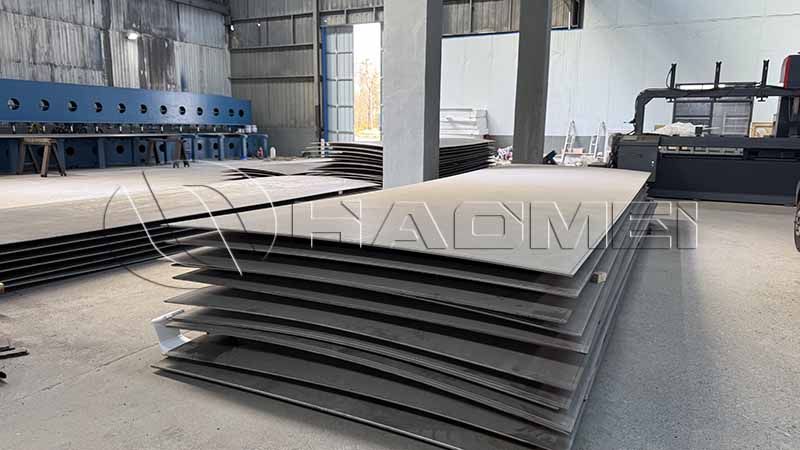
Aluminum clad steel sheet
The aluminum steel clad plate is not simply aluminum and steel stacked together, but a new type of composite material that achieves atomic-level bonding between aluminum and steel layers through advanced processes such as explosive bonding and hot rolling. This "you in me, me in you" structure retains the advantages of steel in load-bearing and impact resistance while continuing the characteristics of aluminum in weight reduction and corrosion resistance, perfectly meeting the complex needs of different parts of the ship.
The application of aluminum-steel composite plates is particularly effective in the field of ship superstructure. If the traditional superstructure were entirely made of steel, it would significantly increase the ship's weight, leading to a deeper draft and increased fuel consumption; if only aluminum were used, it would be difficult to meet the structural strength requirements. Aluminum-steel composite panels offer the best of both worlds: the outer aluminum layer effectively resists corrosion from the marine atmosphere and salt spray, reducing later maintenance costs; the inner steel layer provides stable structural support for the superstructure, ensuring safety in harsh environments such as wind and waves.
Aluminum-steel composite panels also excel in shipboard liquid tanks and piping systems. For tanks carrying fuel oil, lubricating oil, and other media, the aluminum layer of the composite panel isolates the media from direct contact with the steel, preventing corrosion and contamination.
In seawater cooling pipelines, aluminum-steel composite panels are resistant to seawater corrosion and can withstand certain pressure impacts. Compared to traditional pure aluminum pipes or plastic-lined steel pipes, their service life is extended by 3-5 times, while reducing the risk of pipeline leaks.
Transition Joints
The physical and chemical properties of aluminum and steel differ significantly—aluminum has a low electrode potential, while steel has a high electrode potential. Direct connection easily forms a galvanic cell, leading to electrochemical corrosion. Furthermore, their coefficients of thermal expansion and melting points differ significantly, making welding prone to defects such as cracks and porosity.
Aluminum steel transition joints were developed to solve this "connection problem." Through special material design and manufacturing processes, they create a stable transition zone between aluminum and steel, achieving a reliable connection between the two materials.
Currently, the aluminum-steel transition joints commonly used in ships are either explosive welding or friction welding joints. Their core principle is to mitigate the performance differences between aluminum and steel through an intermediate transition layer (such as titanium or zinc alloy).
Taking explosive welding transition joints as an example, they utilize the high-pressure shock wave generated by an explosion to achieve metallurgical bonding of the aluminum, transition layer, and steel materials under extreme pressure. The joint strength can reach over 90% of the base material strength and possesses excellent corrosion resistance and fatigue resistance.
In marine propulsion systems, transition joints play a crucial role. The bases of the main engine and generators are mostly steel structures, while the piping of the cooling and fuel systems is mostly aluminum. Transition joints are the "key link" connecting the two. Without transition joints, direct welding of aluminum and steel pipes is not only prone to corrosion and leakage but may also lead to joint breakage due to vibration and thermal expansion and contraction, causing propulsion failures.
Using transition joints not only ensures the sealing and stability of the piping system but also reduces vibration transmission and improves the operational reliability of the power system. Furthermore, transition joints play an irreplaceable role at the connection between the aluminum superstructure and the steel hull of a ship, effectively mitigating the deformation differences between the two under temperature changes and external forces, and preventing stress concentration at the structural connection.
Original source: https://www.marine-aluminium-plate.com/a/aluminium-steel-clad-sheet-and-transition-joints.html
Aluminum 5754 for Special Vehicles
In the specialized vehicle sector, tanker truck design and manufacturing continuously strive for higher performance, safety, and economy. As a high-quality material, aluminum 5754 is gradually emerging in tanker truck manufacturing, demonstrating its outstanding application value.
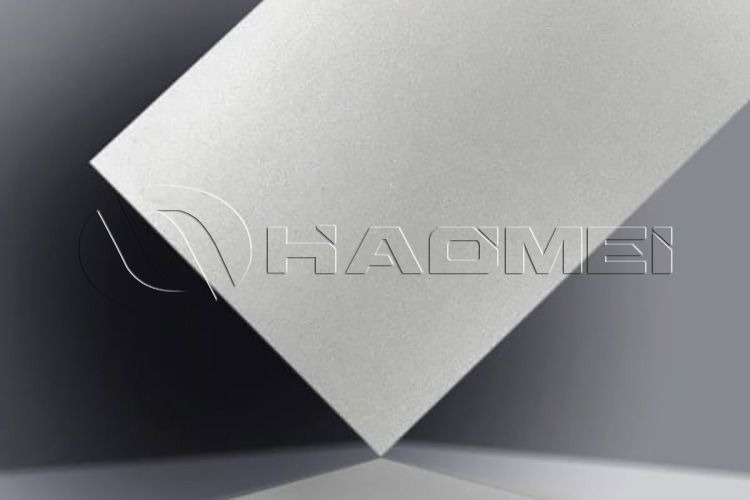
5754 Aluminum alloy properties
5754 aluminum alloy belongs to the AL-Mg rust-resistant aluminum family and has a range of impressive properties. Its medium strength means it can withstand the various stresses faced by tank trucks during transportation, from the pressure of the liquid inside the tank to the bumps and vibrations of travel.
Excellent corrosion resistance is a key advantage of 5754 aluminum alloy. Tank trucks often transport a variety of liquids, including highly corrosive chemicals. 5754 aluminum alloy effectively resists these substances, significantly extending the service life of the tank trucks.
Furthermore, the alloy has excellent weldability and ease of fabrication, making it easy to weld different components together during tank truck manufacturing and easily form complex shapes to meet design requirements.
Specific Applications in Tank Trucks
In tank truck manufacturing, 5754 aluminum alloy is widely used in several key areas. A complete tank truck body typically requires four to six welded aluminum plates, and 5754 aluminum alloy is used in many of these areas. For example, 5754 aluminum alloy is often used for bulkheads, effectively separating the tank's interior while maintaining strength and ensuring stability during transportation.
Furthermore, in designs requiring high overall tank performance, 5754 aluminum alloy can be used as an alternative material for the tank body, paired with commonly used 5083 aluminum plates to create a sturdy and durable tank structure.
In refrigerated trucks, 5754 aluminum alloy is widely used. The refrigerated truck body is a key component in maintaining a low-temperature environment for cargo, and 5754 aluminum alloy is often used for the body's cladding. Its excellent corrosion resistance protects against moisture erosion during refrigeration, preventing damage to the body due to rust and ensuring stable refrigeration.
The alloy's lightweight properties also reduce the overall weight of refrigerated trucks, helping to reduce energy consumption and improve transportation efficiency. Furthermore, 5754 aluminum alloy is easily formed and can be processed into various shapes tailored to the specific design requirements of the refrigerated truck body, ensuring the required sealing and structural strength.
5754 aluminum alloy is also used in specialized engineering vehicles, such as aerial work platforms and concrete pump trucks. For example, components such as aerial work platforms have stringent requirements for material strength and weight. 5754 aluminum alloy offers moderate strength, meeting the mechanical demands of the boom during load-bearing and extension.
Its lightweight design reduces the boom's weight, lowering the load on the vehicle chassis and enhancing operational flexibility and safety. For certain structural components of concrete pump trucks, the corrosion resistance of 5754 aluminum alloy can mitigate potential corrosion from materials like concrete, extending component life.
5754 aluminum alloy also finds application in specialized sanitation vehicles, such as garbage trucks. Garbage trucks frequently come into contact with highly corrosive waste and sewage. The corrosion resistance of 5754 aluminum alloy effectively resists these substances, ensuring the proper functioning of vehicle components and reducing maintenance costs. Furthermore, its lightweight properties help increase the truck's loading capacity and driving efficiency, better meeting the demands of sanitation operations.
Original source: https://www.aluminium-tanker-plate.com/a/aluminum-5754-for-special-vehicles.html
Large Aluminum Plate Size for Fuel Tank
In the evolution of tank truck materials, aluminum tanker plates, with their inherent advantages such as low density, corrosion resistance, and ease of processing, have gradually replaced traditional steel as the mainstream choice. More importantly, tank truck manufacturing today clearly favors the use of large plate aluminum, a trend driven by both technological upgrades and market demand.
Currently, the thickness of mainstream large aluminum sheets for tank trucks is mostly concentrated between 2.0mm and 8.0mm—thin sheets are mainly used for light-load food transport tanks and drinking water tanks, while thicker sheets are suitable for hazardous chemical tanks, asphalt tanks, and other applications requiring higher strength.
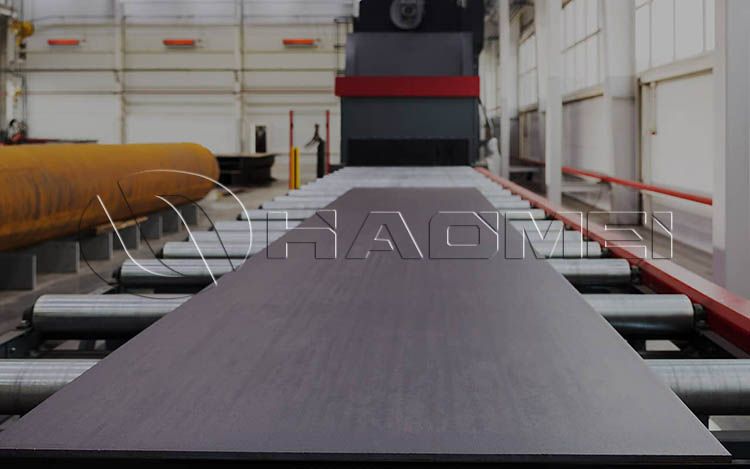
The advantages of large aluminum sheets are particularly prominent in terms of length and width. Traditional small-size aluminum sheets are typically standard plates of 1220mm × 2440mm, while large aluminium plate size specifically for tank trucks have achieved "customized extensions," with common specifications reaching 1500mm × 6000mm and 1800mm × 8000mm. Some large tanks even use special-size aluminum sheets with a width exceeding 2000mm and a length within 10000mm.
In terms of materials, aluminum-magnesium alloys such as 5052, 5083, and 5A06 are the dominant materials. These alloy aluminum plates not only retain the lightweight characteristics of pure aluminum but also enhance strength and corrosion resistance through the addition of magnesium, perfectly matching the working environment of tank trucks that are in contact with various media for extended periods.
The core reason why tank truck manufacturers are turning to large aluminum plates is that they can solve many pain points of traditional small-size plates, bringing comprehensive performance improvements.
The most obvious benefit is the enhanced lightweight advantage. The lightweight of tank trucks directly affects transportation efficiency and fuel costs. Large-size aluminum plates reduce the number of plate splices, and fewer welds mean lower added weight—compared to tanks made of small-size aluminum plates, the weld weight of large-size aluminum plate tanks can be reduced by 15%-20%.
In addition, aluminum itself has only one-third the density of steel, resulting in a 5%-8% increase in the effective load of the tank truck. For logistics companies with huge annual transportation volumes, this is undoubtedly a significant cost saving.
Secondly, it improves the sealing and safety of the tank. Whether transporting hazardous chemicals or liquid food, the sealing of the tank is of paramount importance. When splicing small-sized aluminum plates, each additional weld seam increases the risk of leakage, while large aluminum plates significantly reduce the number of weld seams.
For example, in a 50-cubic-meter oil tanker, using 1800mm × 8000mm large-sized aluminum plates reduces weld length by more than 60% compared to standard small-sized plates. Simultaneously, fewer weld seams reduce the probability of defects such as slag inclusions and porosity during welding. Combined with the excellent corrosion resistance of aluminum-magnesium alloys, this effectively prevents leaks caused by weld corrosion, significantly improving transportation safety.
Large-sized aluminum plates also excel in processing efficiency and cost control. Traditional small-sized aluminum plates require frequent cutting, splicing, and welding processes, which are not only time-consuming and labor-intensive but also generate significant waste of scrap material—material utilization is typically only 75%-80%.
Large plate aluminum can be customized to the unfolded dimensions of the tank, increasing material utilization to over 90% and reducing waste costs. Simultaneously, the reduced number of welds directly shortens welding time, reducing the processing cycle of a single tank by 20%-30%, helping manufacturers increase production capacity and respond quickly to market orders.
Furthermore, large-size aluminum plates optimize the appearance and durability of the tank. A smoother tank surface with fewer welds not only enhances the product's aesthetics but also reduces erosion and wear on the welds during transportation, extending the tank's lifespan. For food and chemical tanks requiring regular cleaning, the smooth inner wall facilitates cleaning and reduces maintenance costs.
From an industry development perspective, the increasing demand for large-size aluminum plates for tank trucks has also driven advancements in aluminum plate production technology. Today, aluminum plate manufacturers can ensure uniform thickness in both length and width directions of large aluminum plates through processes such as wide-width rolling and precise temperature control, avoiding deformation problems caused by excessive size and providing a stable and reliable raw material support for tank truck manufacturing.
Original Source:https://www.aluminumtankerplate.com/a/large-aluminum-plate-size-for-fuel-tank.html
How Is FSW Aluminium for Shipbuilding Produced #aluminum #shipbuilding
Haomei Aluminum provide wide and extra wide aluminum FSW plate for the superstructure of the ships. It will help you shorten the constructio...

-
With the spread of energy saving and emission reduction concept, lightweight vehicles have been quickly promoted. Aluminum alloy is one of...
-
In the vast world of aluminum alloys, 5052 and 5754 aluminum alloys have become effective materials in many fields due to their unique pro...
-
In the field of food packaging, the packaging of butter is crucial. It not only ensures the quality and freshness of butter, but also attr...